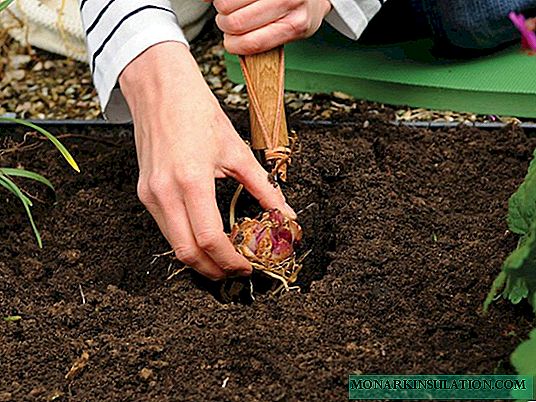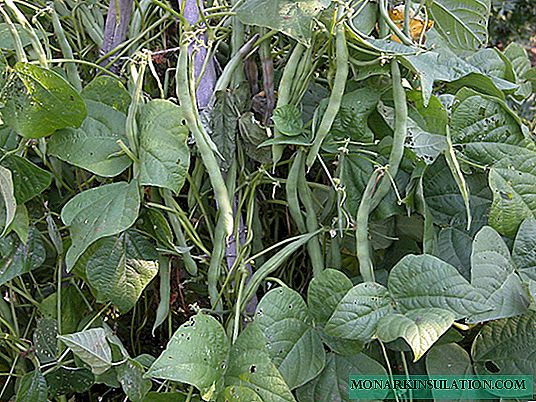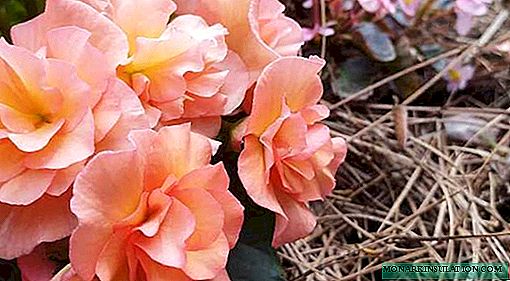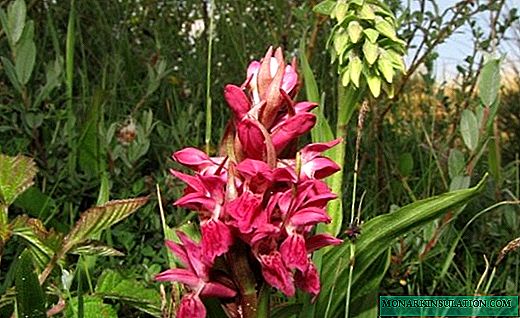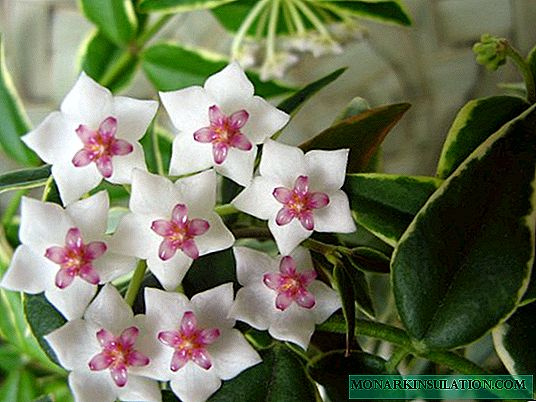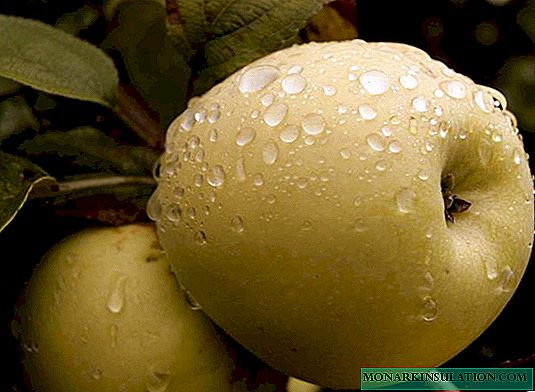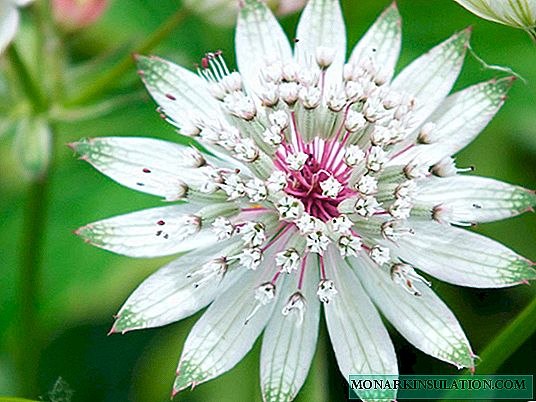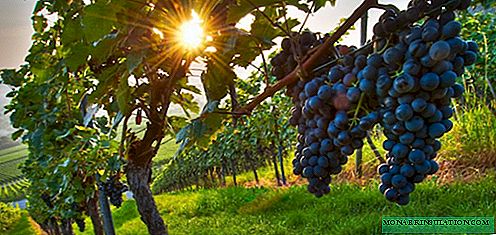
In the view of a resident of a metropolis, a suburban area is a piece of paradise with a beautiful house, green grass, fragrant flower beds, a brook or a pool, neatly broken beds. But often the reality is directly opposite to fairy tales, and you get a plot with a ravine or on the edge of a hill. Do not worry: proper slope strengthening and landscape decoration will solve all problems.
If you became the owner of a country house with an uneven terrain, you should turn unpleasant surprises in a favorable direction. First you need to remember the advantages of an unusual site:
- Rain stagnation in any territory with a slope is completely excluded.
- The plane turned to the sun is well lit, so decorative plants and vegetables will quickly develop on the slope, especially from the south side.
- Unusual terrain is a unique opportunity for the original design of personal territory.
- Using the natural relief features, you do not need to specifically erect structures to create a waterfall, cascade or alpine hill.
Recall the cons. For plants planted on a slope, an additional frequent watering will be required, since water will practically not linger in the soil. Lawn lovers have no luck - it’s quite difficult to achieve an even silky carpet on an inclined plane. Uneven terrain cannot be used for more practical things, for example, a playground or a clearing for relaxation, and it is also impossible to install a bench or table on it. And the main minus is the additional costs of strengthening slopes and slopes, upgrading, the installation of beds or flower beds.
So now you can get down to business.
In general, for the right choice of the method of strengthening it is necessary to take into account some factors:
- soil structure;
- degree of bias;
- groundwater neighborhood;
- the likelihood of natural damage: landslides, bouts, shedding.
Suppose a planting is sufficient for a gentle slope, which will fix the soil with their roots and stop the destruction process. Steep slopes require a more serious approach: only specially made structures from biomats, gabions, stones, concrete blocks, geogrids can prevent shedding. After selecting the material, it is necessary to determine the exact working area and carry out preparatory work.

Even the steepest slopes can be turned into a magnificent stone garden by laying retaining walls with beautiful decorative tiles, and adjacent paths with paving stones

It is not necessary to make the reinforcing structure the same or single-layer: structures in the form of stairs or terraces visually increase the area
Natural way: the use of plants
If the angle of inclination does not exceed 8-10 degrees, then plants: trees, shrubs, flowers and grasses are suitable for stabilizing the soil cover. Their flexible roots penetrate deep into the soil, thereby protecting it from landslides and erosion. The most powerful roots of trees, but planting the entire slope with large plants does not make sense. Compositions of separately standing low trees and bushes look much more attractive. For the design of a steep edge or ravine, broom, elderberry, viburnum, Japanese quince, scoopia, barberry, cotoneaster, dog rose are well suited.

Uneven relief allows you to create real masterpieces of decorative art: a combination of stones of various shapes, vibrant colors and flowing water looks more than picturesque
Flowering bushes at the same time serve as decor elements, like plants with long shoots and lush flowers, for example, climbing roses. Too bright cocktail of climbing plants should not be made up, 1-2 densely flowering species are enough. Ground cover plants are ideal for decorating a sloping surface. Periwinkle, woolly stalk, ivy, sunflower create a dense carpet, serving as a backdrop for larger species.

Ground cover plants are a good way to strengthen gentle slopes, and with the help of color diversity and difference in height - hide small relief defects
The uneven terrain with elevations, ledges and depressions is a real find for lovers of alpine hills and rockeries. From a handful of stones, coniferous trees and several types of flowers, they are able to create a real miracle, decoration of any summer cottage. The only thing you need to take care of before arranging the flower garden is to create favorable growing conditions, that is, to ensure regular watering.
Artificial ways to strengthen
Designing a slope by plants is considered a natural way of protecting against shedding, although slope strengthening on a site can also occur artificially - using stones, logs and structures made of polymeric materials.
Geoplastics material in landscaping will also be useful: //diz-cafe.com/vopros-otvet/planirovka/geoplastika-v-landshaftnom-dizajne.html

Retaining walls made of durable material and stairs - the most common methods of strengthening and parallel decoration of slopes in summer cottages
Option # 1 - stone or log fences
Artistically designed fences made of various materials well restrain surfaces of any degree of steepness. Stones or wooden elements are laid on the outside of the slope, securing in various ways: using cement or fixing in the ground (burying in the ground). Limestone slabs, cobblestones, shell rock, pieces of granite are folded in the form of a wall, and wooden parts are laid with a ladder or fence.
Related article: Retaining walls in a landscape: from what and how to make good “props”?
Option # 2 - features of laying geotextiles
Steep slopes are difficult to strengthen in a natural way, by planting trees or grasses. In this case, geotextile - a dense material made of polyester or polypropylene fibers that saves water and has high strength properties, saves. A fragment of the material is pulled to the surface, fixed on all sides with anchors, then decorated. For decoration, natural stone or tile is ideally suited to each other with flowers planted on a fertile soil layer.

Anchors with which the geotextile layers are held must be removed after backfilling with soil - non-fixed material is easier to remove if necessary
Option # 3 - geomats and biomats
Both types of soil cover are used for more effective protection of surfaces with a slope of up to 45% (some types of geomats - up to 70%) when planting plants. Biomats are made from coconut or straw fibers attached to the cellulosic layer. Geomats are multi-layer polypropylene gratings. The root system of plants does not develop immediately, so for instant stabilization of the soil, retaining structures are first laid, and plants are already planted on them.

Biomats have two important advantages: surface greening for 2 months and partial soil fertilization due to decomposition of the material

Geomats are a practical and relatively inexpensive material with many advantages, including easy installation, high efficiency and durability
Roll material is laid out over the entire surface of the slope, each piece is fixed around the perimeter, and grass or flowers are sown. The loose fibrous structure allows the seeds to gain a foothold and germinate, and subsequently form a thick carpet with an invisible reinforcing layer.
Option # 4 - a step-by-step example of installing a geogrid
Strengthening a small area is within the power of even a novice landscape designer, in other words, the owner of the cottage. If there is a small ravine or ditch with crumbling slopes, you can use the voluminous geogrid - a modern polymer tape design.

By filling the geogrid cells with plant soil, you can prepare excellent soil for planting curly or erect flowers, lawn grass, small bushes

If a country house or a bathhouse stands on the edge of a cliff, then a geogrid reinforced with gravel is a great way to create an obstacle to the gradual destruction of a slope
The elements welded together resemble a grid with large cells, which are filled with heavy building material: crushed stone, sand, concrete or nutritious soil for planting.

Having strengthened both slopes of the ditch crossing the summer cottage, you can create an original stone stream or an unusual rockery with coniferous plants and flower beds
Before starting reinforcing, it is necessary to prepare the soil: remove large plants, level and compact the soil as much as possible. There are two options for laying the geogrid: on geotextiles or directly on the ground. In the first case, a geotextile is spread over the entire width of the slope, which plays the role of a draining layer, and then a grid is placed on top. The second option involves direct installation of the grid - immediately to the cleaned area.

Slopes consisting of sand or other sedimentary rocks, which begin to crumble under the influence of wind and rain, are subject to special destruction.
Geogrid cells should be located along the slope. The basic principle of material selection: the steeper the slope, the wider the belt. The lattice segment is stretched in different directions and fixed along the perimeter with anchors or specially planed pegs.

On small slopes, especially in arid areas where drainage is not needed, one geogrid is enough - no additional insulating materials are needed
The cells are covered with either fixing gravel (sand) or soil under the turf. If plans include flower planting, the soil should be fertile and fertilized.

To fill the grate with soil or sand, you can use construction vehicles, a garden wheelbarrow or just a bucket with a shovel
This is one of the simplest options for strengthening the slope in the country. Having turned on imagination and using one of the decoration methods, you can turn an ordinary crumbling slope into a flowering garden - beautiful and original.


